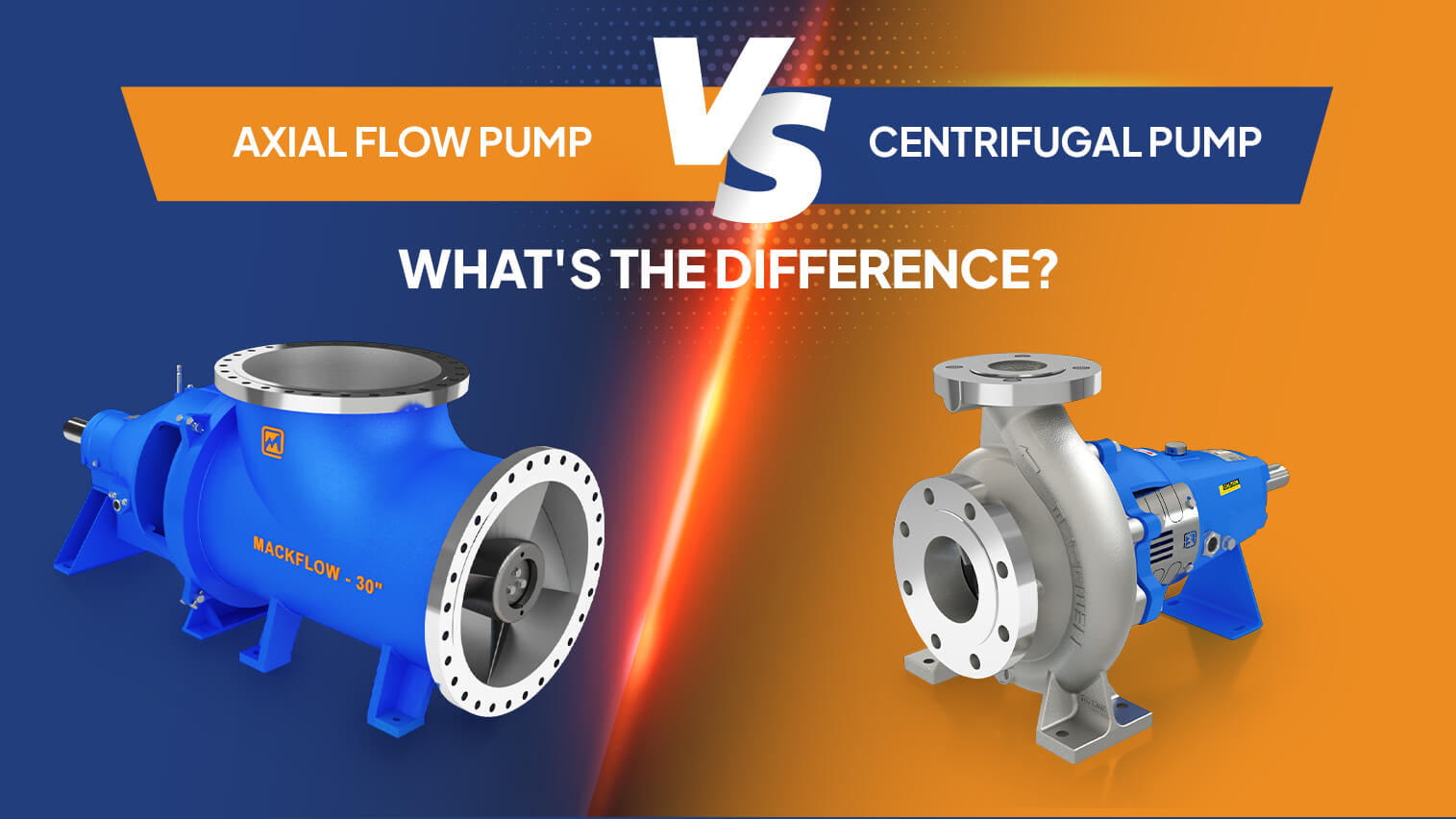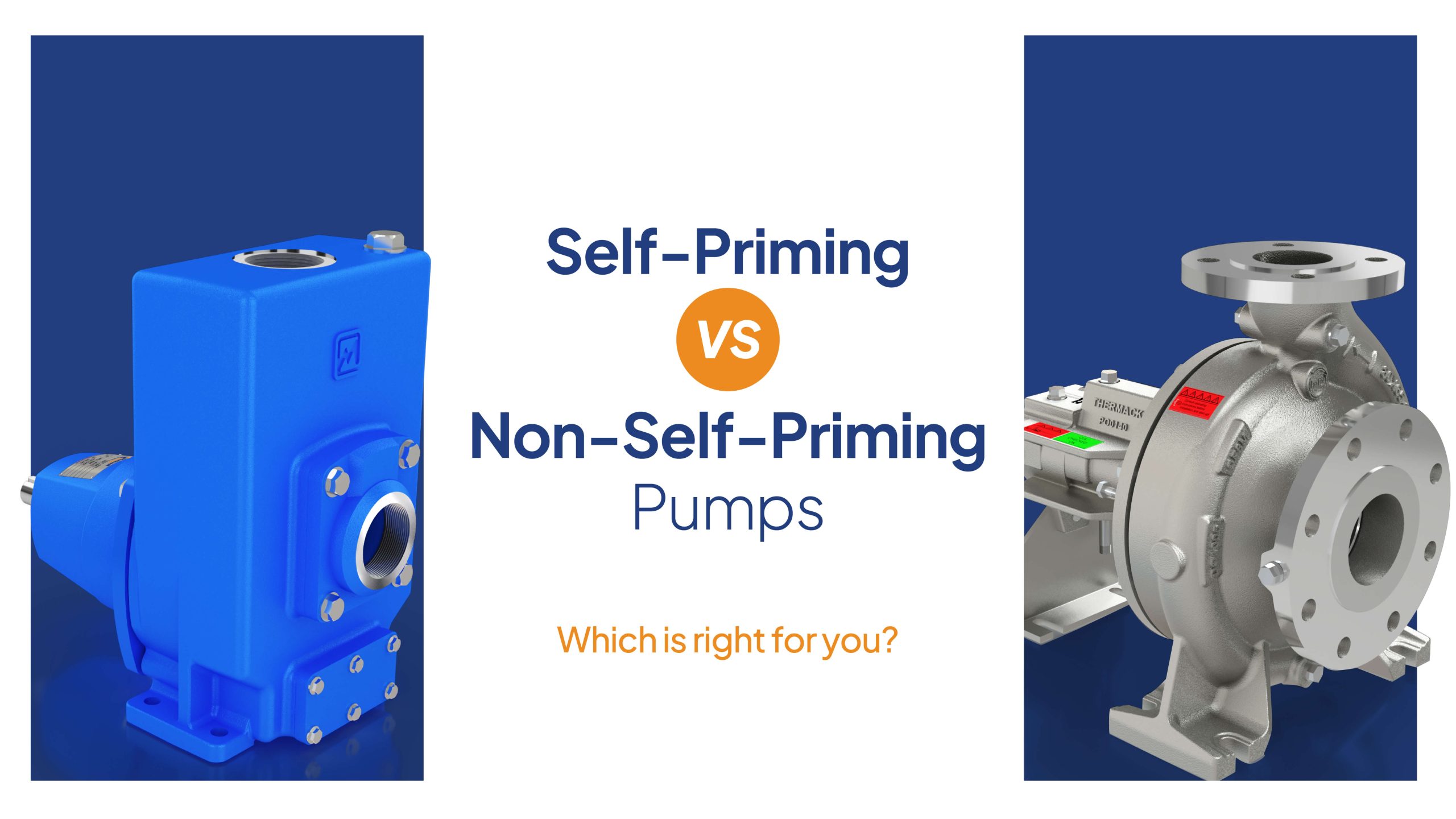Axial Flow Pump vs Centrifugal Pump: What’s the Difference?

Whether it’s chemical, oil & gas, or pulp and paper, pumps are the behind-the-scenes heroes across industries, moving liquids from one place to another. Whether you’re running an industrial plant or managing a water treatment facility, choosing the right pump can make all the difference in performance and efficiency.
Axial Flow Pumps and Centrifugal Pumps are among the most common and widely used pumps. At first glance, they might seem similar, but their working principles, applications, and pros and cons set them apart.
So, how do you choose the right one for your needs? Let’s do a battle round – Axial Flow Pump vs Centrifugal Pump
Difference between Axial Flow Pump vs Centrifugal Pump
Fluid Movement
-
Axial Flow Pumps
Imagine pushing water through a tube with a fan — that’s how an axial flow pump operates. Liquid enters the pump through its inlet and meets rotating blades (or vanes) that propel it along the same axis as the pump shaft. These blades push the liquid forward, converting kinetic energy into pressure energy as the fluid travels through the pump. This design makes axial flow pumps ideal for applications that require high flow rates but low head.
-
Centrifugal Pumps
Now think of stirring a cup of coffee really fast — liquid swirls outward due to centrifugal force. Centrifugal pumps use this principle. Liquid enters the inlet, where a spinning impeller with multiple blades flings it outward to the pump casing. The fluid gains speed and pressure, then flows out through the outlet, moving efficiently through pipelines.
Efficiency
-
Axial Flow Pumps
Axial flow pumps shine when it comes to high-flow, low-lift applications. Since the liquid flows straight along the pump’s axis, there’s minimal friction and energy loss, resulting in impressive efficiency at lower heads. Think of them as the go-to choice when you need to move a lot of liquid quickly without pushing it too high. However, their efficiency drops when handling higher heads, as the liquid struggles against increased resistance and friction.
-
Centrifugal Pumps
Centrifugal pumps, on the other hand, thrive in medium to high-head scenarios. As the liquid moves outward in a radial direction, the pump builds enough force to overcome greater resistance, making it ideal for applications that require a decent lift with steady flow. With their ability to convert kinetic energy into pressure efficiently, centrifugal pumps deliver reliable performance across a wide range of conditions.
Characteristics
-
Axial Flow Pumps
- High Flow Capacity: Moves large volumes of liquid quickly
- Lower Head: Perfect for short vertical lifts
- Compact Design: Great for tight spaces
- Strong Adaptability: Handles various liquids—from clean water to sewage
- Easy Maintenance: A simple structure makes upkeep hassle-free
- Adjustability: Some models feature adjustable blade angles for better performance
- Noise Levels: Perfect for noise-sensitive applications
- Economy: Low manufacturing and installation cost—suitable for economic environments
- Customizability: Customised according to parameters such as flow rate and head
-
Centrifugal Pumps
- High Flow Rates: Handles large liquid volumes
- Medium Head: Great for moderate vertical lifts
- Compact Design: Fits versatile setups
- Stable Performance: Provides consistent flow and pressure
- Simple Structure: Easy to build, maintain, and repair
- Multi-Cascade Use: Can be linked in series for higher lifts
- Quiet Operation: Runs with less noise
- Long-Distance Delivery: Ideal for transporting liquids over long distances
Need help understanding which pump fits your system?
Fields Suitable for Pumps:
-
Axial Flow Pumps
- Irrigation: Watering large agricultural fields
- Drainage Systems: Removing rainwater, sewage, and other liquids
- Wind Farms: Cooling wind turbine generators
- Ships and Ports: Loading/unloading cargo and supplying fresh water
- Industrial Cooling: Circulating coolants in factories
- Environmental Engineering: Managing water flow in flood control and wetland restoration
- Fresh Water Supply: Extracting groundwater or feeding water treatment plants
- Hydropower: Directing water to turbines in hydro plants
-
Centrifugal Pumps
- Construction Engineering: Water supply, fire protection, drainage, and sewage
- Municipal Water Supply: Delivering water to homes and industries
- Sewage Treatment: Moving waste liquids for processing
- Agriculture: Powering irrigation and sprinkler systems
- Oil & Gas: Handling liquids during exploration and transport
- Food and Beverage: Moving juices, milk, and other liquids
- Water Treatment: Mixing, circulating, and purifying
- Energy Sector: Cooling and circulating liquids in power plants
- Shipping and Ports: Supporting port operations and ship loading
So, which pump wins? It depends on your needs!
Knowing how these pumps work helps you choose the right one to boost efficiency, cut costs, and keep operations flowing smoothly. In industrial fluid management, the right pump isn’t just a tool—it’s the heart of your system.
Mackwell Pumps is one of the leading Industrial Pump Manufacturers, providing top-quality pumps for all your needs. With a commitment to excellence and innovation, Mackwell Pumps ensures reliable performance and customer satisfaction every step of the way.





